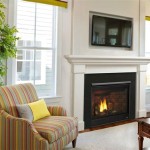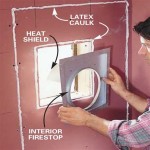Designing a Living Room Around a Fireplace: A Comprehensive Guide
A fireplace often serves as the focal point of a living room, dictating the layout and influencing the overall aesthetic. Effectively designing around a fireplace requires careful consideration of scale, proportion, furniture placement, and the integration of both form and function. This article provides a detailed guide to designing a living room around a fireplace, covering essential aspects from spatial planning to decorative accents.
Establishing the Focal Point and Spatial Arrangement
The fireplace, by its very nature, establishes a natural focal point. The initial step in designing the living room is to determine the optimal furniture arrangement that acknowledges and enhances this focal point. This involves several considerations, including the room's dimensions, the fireplace's location, and the intended use of the space. The goal is to create a balanced and inviting atmosphere that directs attention towards the fireplace without sacrificing comfort or practicality.
Consider the "conversation area." A seating arrangement that faces the fireplace encourages social interaction and creates a cozy ambiance. A common approach is to place a sofa directly opposite the fireplace, flanked by armchairs or accent chairs. The distance between the seating and the fireplace should be appropriate for comfortable conversation and viewing. If the room is large, a larger distance may be appropriate accompanied by a larger area rug to help define and ground the seating area.
In smaller rooms, a symmetrical arrangement around the fireplace can create a sense of order and balance. This may involve placing identical chairs or side tables on either side of the fireplace. However, symmetry can sometimes feel static or formal. An asymmetrical arrangement, where different but visually balanced elements are placed on either side of the fireplace, can create a more dynamic and interesting space. One side may feature a floor lamp and a small table, while the other side might include a tall plant and a stack of books. The key is to ensure visual equilibrium, even if the elements are not identical.
Traffic flow is another critical aspect of spatial arrangement. Ensure that there is adequate space for people to move freely throughout the living room without obstructing the view of the fireplace or squeezing between furniture. Pathways should be clear and unobstructed, leading from entry points to seating areas and other parts of the room. This may involve strategically positioning furniture to create natural pathways and avoiding the placement of large objects in high-traffic areas.
Finally, consider the architectural style of the fireplace itself. A modern, minimalist fireplace may require a different approach than a traditional, ornate fireplace. The surrounding furniture and decor should complement the fireplace's style and enhance its visual impact. A sleek, modern space may benefit from clean-lined furniture and minimalist accessories, while a traditional space may call for more ornate pieces and classic textures.
Selecting Appropriate Furniture and Upholstery
The selection of furniture and upholstery plays a significant role in defining the style and comfort of the living room. The scale and style of the furniture should complement the fireplace and the overall design aesthetic. Color, texture, and material choices are also crucial for creating a cohesive and inviting atmosphere.
The sofa is typically the largest piece of furniture in the living room and serves as the anchor for the seating area. Choose a sofa that is appropriately sized for the room and that provides comfortable seating for multiple people. Consider the style of the sofa in relation to the fireplace. A modern, low-slung sofa may work well with a contemporary fireplace, while a more traditional, rolled-arm sofa may be better suited for a classic fireplace.
Armchairs and accent chairs provide additional seating and can add visual interest to the room. Choose chairs that complement the sofa in terms of style and color, but that also offer a contrasting element to prevent the room from feeling too monotonous. A mix of textures and patterns can also add depth and visual appeal. For example, a velvet armchair paired with a linen sofa can create a luxurious and inviting feel.
The choice of upholstery fabrics is also essential. Consider the durability and maintenance requirements of different fabrics. Natural fibers like cotton and linen are breathable and comfortable, but they may be more susceptible to stains and wear. Synthetic fibers like polyester and microfiber are more durable and stain-resistant, but they may not feel as luxurious. Leather is a classic choice that is both durable and stylish, but it can be expensive. The color and pattern of the upholstery should complement the fireplace and the overall color scheme of the room. Neutral colors like beige, gray, and white are versatile and can be easily paired with other colors and patterns. Bold colors and patterns can add personality and visual interest, but they should be used sparingly to avoid overwhelming the space.
Tables are also important elements in the living room. Coffee tables provide a surface for drinks, snacks, and books, while side tables offer convenient placement for lamps and other accessories. Choose tables that are appropriately sized and styled for the room. A large coffee table can serve as a focal point in the seating area, while smaller side tables can be used to fill in gaps and provide additional functionality. The material and finish of the tables should complement the fireplace and the other furniture in the room.
Integrating Decorative Elements and Lighting
Decorative elements and lighting are essential for creating a cohesive and inviting living room. Accessories such as artwork, rugs, pillows, and throws can add personality and visual interest to the space. Lighting can be used to create ambiance, highlight architectural features, and provide functional illumination.
Artwork can be used to enhance the visual appeal of the fireplace wall. Consider hanging a large painting or a series of smaller prints above the mantel. The artwork should complement the style of the fireplace and the overall design aesthetic of the room. A modern, abstract painting may work well with a contemporary fireplace, while a more traditional landscape painting may be better suited for a classic fireplace. The size and scale of the artwork should be appropriate for the wall space. A large piece of artwork can serve as a focal point, while smaller pieces can be used to create a gallery wall.
Rugs can be used to define the seating area and add warmth and texture to the room. The rug should be large enough to anchor the furniture and provide a comfortable surface for walking. The color and pattern of the rug should complement the fireplace and the other elements in the room. A neutral-colored rug can serve as a grounding element, while a patterned rug can add visual interest and personality. Consider the material and texture of the rug. Wool rugs are durable and luxurious, while synthetic rugs are more affordable and stain-resistant.
Pillows and throws can be used to add comfort and visual interest to the sofa and chairs. Choose pillows and throws that complement the color scheme and style of the room. A mix of textures and patterns can add depth and visual appeal. For example, a velvet pillow paired with a linen throw can create a luxurious and inviting feel. The size and shape of the pillows should be appropriate for the size of the sofa and chairs.
Lighting is essential for creating ambiance and providing functional illumination. Consider a combination of ambient, task, and accent lighting. Ambient lighting provides overall illumination for the room, while task lighting is used for specific activities such as reading or working. Accent lighting is used to highlight architectural features or decorative elements. Floor lamps, table lamps, and sconces can be used to create different lighting effects. Dimmers can be used to adjust the brightness of the lights and create a more intimate atmosphere. Consider the color temperature of the light bulbs. Warm white light creates a cozy and inviting atmosphere, while cool white light is more energizing. The placement of lighting fixtures should be carefully considered to avoid glare and shadows. The fireplace itself can provide a source of warm, flickering light, which can enhance the ambiance of the room.
Finally, consider the accessories that will be placed on the mantel. These should be chosen carefully to complement the fireplace and the overall design aesthetic. A few well-chosen objects are often more effective than a cluttered display. Consider items such as candles, vases, sculptures, and books. The colors and textures of the accessories should complement the fireplace and the other elements in the room.

36 Fireplace Decor Ideas Modern Mantel

40 Best Fireplace Décor Ideas Mantel

Fireplace Design Ideas For Your Home Designcafe

4 Stylish New Living Rooms Arranged Around A Fireplace

Lovely Painted Brick Fireplaces In The Living Room Beautiful Homes

46 Stunning Living Room With Fireplace Design Ideas Family Farm House Remodel

16 Ideas For Living Room Layouts With A Fireplace Modsy Blog Narrow Decor Livingroom Layout

36 Fireplace Decor Ideas Modern Mantel

Design Your Living Room Around Fireplace Jetmaster Vic

How To Arrange A Living Room With Fireplace House Of Hipsters








